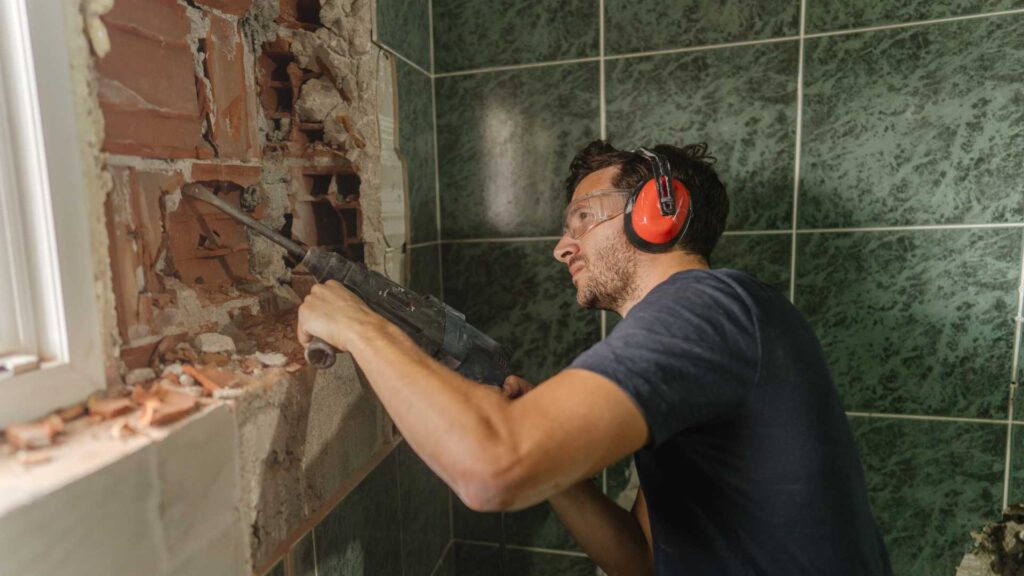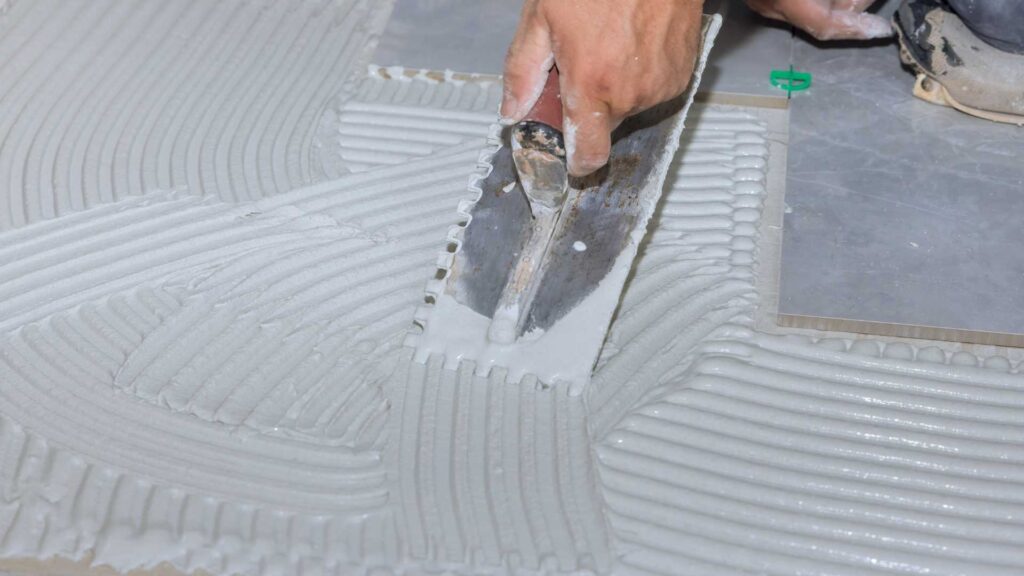Bathroom renovations can be a rewarding endeavour, enhancing the functionality and aesthetic appeal of one of a home’s most essential spaces. However, these projects often come with their fair share of challenges, and mistakes can lead to costly and time-consuming setbacks. Understanding the most common pitfalls can help homeowners navigate their renovation journey more smoothly and achieve the desired outcome without unnecessary stress or expense.
One of the most frequent mistakes is poor planning, which often leads to impractical layouts and overlooked details. Failing to consider factors such as ventilation, lighting, and storage can result in a bathroom that is either uncomfortable to use or lacking in essential functionality. Another area for improvement is skimping on quality materials and workmanship. While it might be tempting to cut costs, inferior materials and rushed craftsmanship can lead to problems like leaks, mold, and early wear and tear, which could require further renovations.
Neglecting to set a realistic budget can derail the entire project. Only underestimating costs or not accounting for unexpected expenses can lead to complete renovations or the need to compromise on key elements. By being aware of these common bathroom renovation mistakes, homeowners can take proactive steps to avoid them, ensuring a smoother process and a more satisfying end result.
Summary
Bathroom renovations can be challenging, with common mistakes often leading to costly and time-consuming setbacks. To ensure a successful project, avoid the following pitfalls:
- Poor Planning: Sufficient planning can result in impractical layouts and overlooked details like ventilation and storage. A comprehensive plan is crucial.
- Skimping on Quality: Choosing cheap materials or rushing workmanship can lead to issues like leaks, mould, and early wear and tear.
- Budget Mismanagement: Underestimating costs and failing to account for unexpected expenses can derail the project. Set a realistic budget and stick to it.
- DIY Overconfidence: Tackling complex tasks without the necessary skills can cause serious damage. Know your limits and hire professionals when needed.
- Neglecting Ventilation and Waterproofing: Proper ventilation and waterproofing are essential to prevent moisture build-up, mould, and long-term damage.
- Overlooking Lighting and Storage: Good lighting enhances functionality, while adequate storage keeps the space organised. Don’t neglect these essential elements.
By avoiding these mistakes, you can ensure a smoother renovation process and achieve a functional and aesthetically pleasing bathroom.
Planning And Design Mistakes
Inadequate Planning
One of the most frequent mistakes homeowners make is insufficient planning. A successful bathroom renovation starts with a well-thought-out plan. This includes everything from the layout and design to the materials and fixtures you’ll use. Rushing into a renovation without a comprehensive plan can lead to expensive changes.
Take the time to carefully consider how you use your bathroom and what improvements are necessary. This could include increasing storage space, improving lighting, or upgrading to energy-efficient fixtures. Proper planning should also account for your budget and timeline, ensuring you don’t overextend yourself financially or run out of time before the project is complete.
Ignoring Functionality
A bathroom might look stunning in a design magazine, but if it doesn’t meet your everyday needs, it’s not a success. Functionality should always come first. Common mistakes in this area include poorly placed fixtures, inadequate storage, and insufficient ventilation.
Consider how you use the space daily. For instance, will you need more than one sink? Is there enough room to move around comfortably? Can you easily access toiletries and towels? A practical layout that meets your needs will enhance the long-term satisfaction of your renovation.
Overlooking the Flow of Space
Another design mistake is not considering the flow of the space. Bathrooms can often be tight on space, so it’s essential to ensure that doors, drawers, and cupboards open without obstruction. The positioning of the toilet, shower, and vanity should create a natural flow, allowing for easy movement within the room.
If you’re working with a small bathroom, consider space-saving solutions like wall-mounted fixtures, sliding doors, or corner sinks. A well-designed layout can make a small bathroom feel much larger and more functional.
Budgeting And Financial Mistakes
Underestimating Costs
One of the biggest things that could be improved in bathroom renovations is underestimating the cost. Renovations often end up costing more than initially expected, especially if unforeseen issues arise, such as plumbing problems or structural issues. To avoid budget blowouts, get multiple quotes from contractors, account for hidden costs, and set aside a contingency fund (usually around 10-15% of the total budget).
Choosing Cheap Materials
Cutting costs by opting for cheaper materials might be tempting, but this can be a false economy. Bathrooms are high-moisture environments, and using low-quality materials can lead to problems like mould, mildew, and water damage. Invest in durable, moisture-resistant materials, especially for flooring, walls, and cabinetry.
Not Sticking to the Budget
Once the renovation is underway, it’s easy to get carried away with upgrades and additional features that weren’t part of the original plan. Sticking to your budget is crucial to avoid overspending. Make all major decisions during the planning stage and try to resist the urge to splurge on last-minute changes.
Hiring And Contractor Mistakes
DIY Overconfidence
While DIY can be a great way to save money, overestimating your abilities can lead to costly mistakes. Tackling complex tasks like plumbing, electrical work, or waterproofing without the necessary skills can result in serious damage and safety hazards. Know your limits and hire qualified professionals for tasks that are beyond your expertise.
Not Vetting Contractors Properly
Hiring the wrong contractor is another common mistake. A poorly executed renovation can lead to delays, subpar workmanship, and even legal disputes. Take the time to vet potential contractors thoroughly. Check their qualifications, ask for references, and view examples of their previous work. It’s also wise to get a detailed contract that outlines the scope of work, timelines, and payment schedules.
Poor Communication with Contractors
Even with a qualified contractor, poor communication can lead to problems. Ensure that you’re clear about your expectations and that the contractor understands your vision for the project. Regular check-ins and updates can help catch issues early before they become major problems.
Technical And Installation Mistakes
Incorrect Measurements
Incorrect measurements are a common cause of renovation headaches. If your measurements are off, it can result in ill-fitting fixtures, wasted materials, and delays. Double-check all measurements before ordering materials or starting construction. When in doubt, consult with a professional to ensure accuracy.
Ignoring Ventilation Needs
Bathrooms are prone to humidity, and moisture can build up without proper ventilation, leading to mould and mildew. Ignoring ventilation needs is a mistake that can cause long-term damage to your bathroom and even your home’s structure. Ensure that your bathroom has adequate ventilation, either through a window or an exhaust fan, to keep the air fresh and moisture levels low.
Skipping Waterproofing
Waterproofing is a critical step in any bathroom renovation. Skipping or poorly executing waterproofing can lead to water damage, which is expensive to repair. Ensure that a licensed professional properly waterproofs all areas prone to moisture, such as showers, baths, and floors.
Aesthetic And Style Mistakes
Overlooking Lighting
Lighting is often an afterthought in bathroom renovations, but it plays a crucial role in the space’s functionality and ambience. Poor lighting can make a bathroom feel small and uninviting, while good lighting can enhance the design and make the room more practical. Consider a mix of task lighting (for areas like the vanity), ambient lighting, and accent lighting to create a well-lit, inviting space.
Following Trends Too Closely
While it can be tempting to follow the latest design trends, remember that trends can quickly become outdated. Choosing classic, timeless designs will ensure that your bathroom looks stylish for years to come. If you want to incorporate trendy elements, do so with easily changeable features like paint colours, accessories, or mirrors rather than permanent fixtures.
Overloading on Fixtures and Features
A common aesthetic mistake is trying to fit too many fixtures or features into a small space. Overloading your bathroom with a little can make it feel cramped and cluttered. Keep your design simple and streamlined, focusing on quality over quantity. Remember, less is often more when it comes to creating a serene and functional bathroom.
Common Mistakes In Finishing Touches
Neglecting Storage Solutions
Inadequate storage is a frequent complaint in bathroom design. Without enough storage, your bathroom can quickly become cluttered and disorganised. To keep the space tidy and functional, incorporate smart storage solutions into your design, such as built-in shelving, recessed cabinets, and vanity drawers.
Skimping on Fixtures and Fittings
Your bathroom’s fixtures and fittings, such as taps, showerheads, and handles, are small details that can have a big impact on the overall look and feel of the room. Skimping on these items can undermine the quality of your renovation. Invest in high-quality fixtures that are both durable and visually appealing.
Forgetting About Maintenance
Finally, a common mistake is not considering the maintenance requirements of your chosen materials and fixtures. Some materials, like natural stone, require regular sealing and maintenance to keep them looking their best. Choose materials that suit your lifestyle and consider the long-term upkeep they’ll require.
Conclusion
A bathroom renovation is a significant undertaking that requires careful planning and execution. By avoiding these common mistakes, you can ensure that your renovation is a success, resulting in a bathroom that is not only beautiful but also functional, durable, and within your budget. Remember to prioritise quality over quantity, plan for the unexpected, and always consult with professionals when needed. With the right approach, your bathroom renovation can transform your space into a relaxing and stylish retreat.
Avoiding these pitfalls will save you time and money and help you create a bathroom that you’ll love for years to come.
Frequently Asked Questions
How Can I Make My Bathroom Renovation More Accessible?
To enhance accessibility, install grab bars, opt for a curbless shower, choose non-slip flooring, and consider a higher toilet seat or a walk-in bathtub.
What Should I Know About Waterproofing In A Bathroom Renovation?
Proper waterproofing is essential to prevent leaks and mould. Use waterproof membranes on floors and walls, especially in wet areas like showers and bathtubs.
Is It Necessary To Upgrade Plumbing During A Bathroom Renovation?
If your plumbing is outdated, upgrading it during a renovation can prevent future issues and accommodate modern fixtures. This is especially important in older homes.
What Are The Advantages Of Using A Freestanding Bathtub?
Freestanding bathtubs are aesthetically pleasing, can be placed anywhere in the bathroom, and often become a focal point. They also offer more design flexibility.
How Do I Choose The Right Paint Colour For My Bathroom?
Light colours can make a small bathroom feel more spacious, while darker hues add drama and depth. Choose moisture-resistant paint to withstand the bathroom’s humidity.



